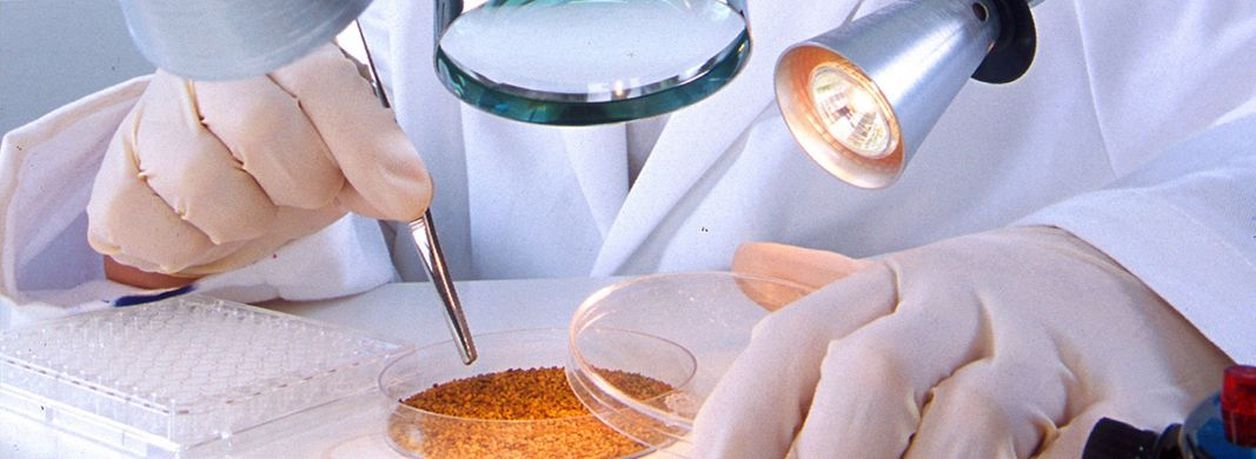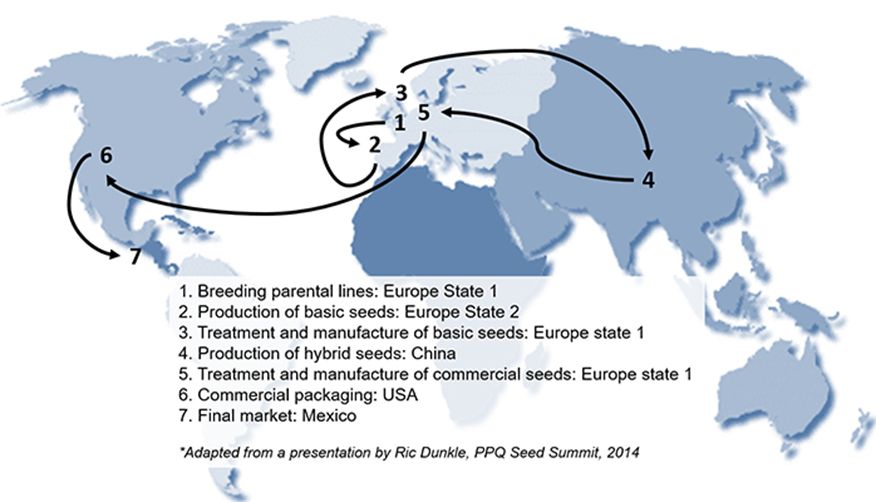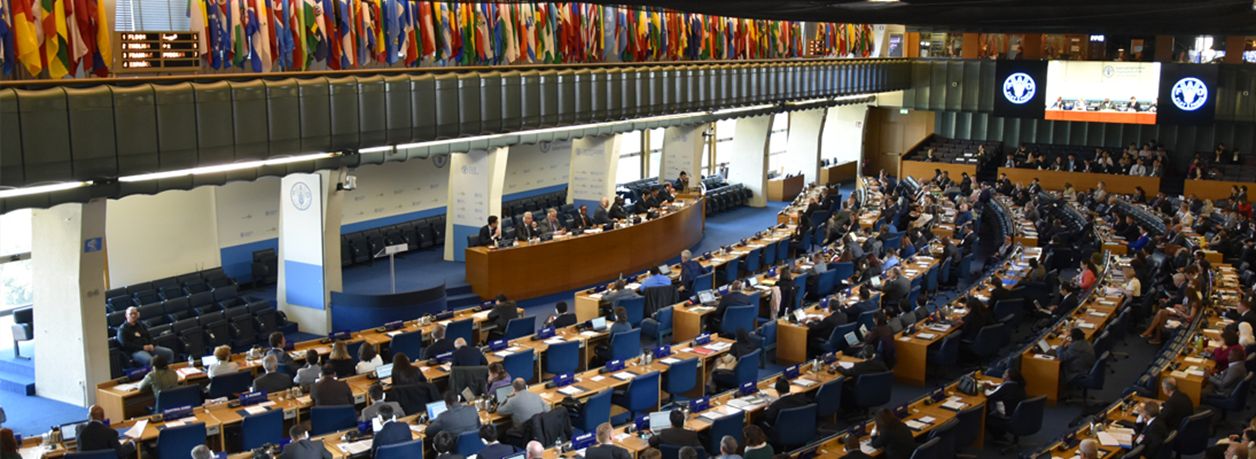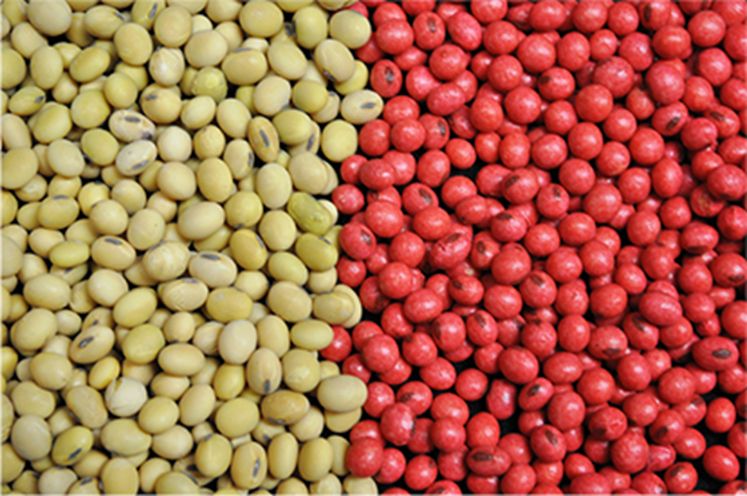HOW NAPPO IS CONTRIBUTING TO HEALTHY SEED TRADE

To compete in today’s global market, North American producers need access to diverse varieties of healthy seed from around the world. They also need safeguards to protect their industries against the introduction and spread of damaging seed-borne diseases.
That’s why the North American Plant Protection Organization (NAPPO) has been working closely with the seed industry; national, regional and international plant protection organizations; academia; and scientific organizations. Together, they are making great strides in developing strategies that will help reduce pest infestation during seed production and facilitate healthy seed trade.
That will be a significant benefit to NAPPO’s member countries—Canada, the United States, and Mexico—which trade a high volume of seeds. Every year, with steady progress, we move closer to our goal of making the international movement of seed safer and plant health (phytosanitary) requirements more consistent among trading partners.
What is the plant health threat to North America?
Seeds that move in international commerce can carry a variety of disease-causing microbes like bacteria, viruses, viroids, and fungi. Planting infected seeds could potentially introduce a devastating disease. From there, the disease could spread to other farms, orchards, and nurseries, jeopardizing entire industries and livelihoods.
What is at risk?
Seed-borne diseases can affect a wide array of crops. Here are just three examples of highly damaging diseases that could harm important North American crops:
- Cucumber green mottle mosaic virus can infect cucurbit species like watermelon, melon, cucumber, pumpkin, squash, and gourds, resulting in stunted fruit and premature fruit drop
- Pospiviroids can produce serious disease symptoms in potatoes, tomatoes, and peppers, such as severe plant stunting and deformed fruit.
- Both peanut clump virus and Indian peanut clump virus can cause peanut clump disease, which can infect peanut and wheat crops; in peanut it can cause severe plant stunting, mottling, and ringspots, and in wheat it can cause severe plant stunting, yellow leaf streaks, and reduced yields.
Where does the threat originate?

Some seeds, particularly vegetable seeds, travel a complex, multi-country route before they reach their final destination. Seed could become contaminated with disease-causing microbes at any point along this route. Consider:
Seed companies may locate breeding and multiplication programs in several countries, and they may distribute seeds from those countries to many other countries. In addition, they might export seeds produced in one country to a second country for processing. Then they may send the seeds to many other destinations—including back to the country of origin.
To complicate matters, when seed is produced, the destination countries and their import requirements may not be known. In fact, several years can pass between when some seed—like vegetable seed—is produced and when it is exported to its final destinations. In the interim, a country’s seed import regulations could change. That makes it difficult to verify that the seeds meet the importing country’s phytosanitary requirements.
How can the threat get to North America?
Damaging plant pests can enter North America with infected plants or plant parts, including seeds or fruit, imported through the mail or as cargo. To protect seed health, NAPPO has been working to harmonize diagnostic protocols for seed-borne diseases.
How has the international community responded?

To address various seed issues, NAPPO worked for many years through the International Plant Protection Convention (IPPC)—an intergovernmental treaty made up of 184 contracting parties (countries)—to adopt the “International Standard for Phytosanitary Measures 38 (ISPM 38) International movement of seeds.” In fact, this international standard began as a NAPPO regional standard. The IPPC expert group that developed ISPM 38 used NAPPO’s standard as a supporting document to model the international standard.
This standard helps national plant protection organizations identify, assess, and manage the pest risk associated with the global movement of seeds for planting. It provides guidance to harmonize how countries inspect, sample, test, and certify seeds for export and re-export. Countries “harmonize” their plant protection efforts by establishing and applying phytosanitary measures based on common standards.
What is NAPPO’s response?

Regionally, NAPPO is promoting ISPM 38’s implementation throughout the Western Hemisphere. For example, NAPPO hosted an Americas-focused ISPM 38 implementation workshop in Costa Rica in 2019.
At the global level, NAPPO, with support from other regional and national plant protection organizations and industry experts, proposed in 2018 that the IPPC develop an annex to ISPM 38. This annex would support the accreditation of systems approaches by national plant protection organizations. The IPPC accepted the proposal with the highest priority.
A systems approach is a series of different risk management measures, at least two of which that act independently,
that may be applied before planting; during the growing season; at or after seed harvest; during seed processing, storage, and transportation; and on arrival in the importing country. Cumulatively, these measures reduce the pest risk associated with the international movement of seeds. The systems approach for ISPM 38 would incorporate existing industry seed
production practices. That would provide a valuable alternative to the sometimes costly and lengthy shipment-by-shipment inspection and phytosanitary certification approach used now.
The NAPPO countries would see enormous plant health and trade benefits by harmonizing their diagnostic protocols. Harmonized diagnostics for accurate pest identification contribute to a robust phytosanitary system. A robust system can address conflicting test results that can delay cross-border seed movements and contribute to understanding the pest situation in NAPPO member countries.
In March 2020, as a matter of priority, NAPPO launched an expert group that will develop a pilot project to harmonize diagnostic protocols for tomato brown rugose fruit virus, which can cause major fruit loss in tomatoes and peppers. The expert group continues to make progress through virtual meetings during the pandemic.
The group includes seed health and diagnostics experts from PPQ; the Canadian Food Inspection Agency (CFIA); Mexico’s Plant Health General Directorate (DGSV); national seed trade association representatives from NAPPO countries; academia; and other institutions.
The pilot project could serve as a model for future regional harmonization on seed diagnostics. It also supports various ongoing efforts, including the U.S. Regulatory Framework for Seed Health (ReFreSH), which will include seed testing. PPQ has been collaborating with the U.S. seed industry, state plant regulatory officials, and academia to develop ReFreSH. This framework aims to reduce pest infestation risks across the seed production continuum.
ReFreSH is based on the internationally recognized hazard analysis and critical control point principles for reducing food safety hazards. It leverages industry best practices, combining them with other risk-reducing measures at critical points in the seed supply system to ensure seed health and make international seed movement safer.
NAPPO will continue to provide a forum for the discussion and development of regional and international initiatives to improve seed health and facilitate trade.